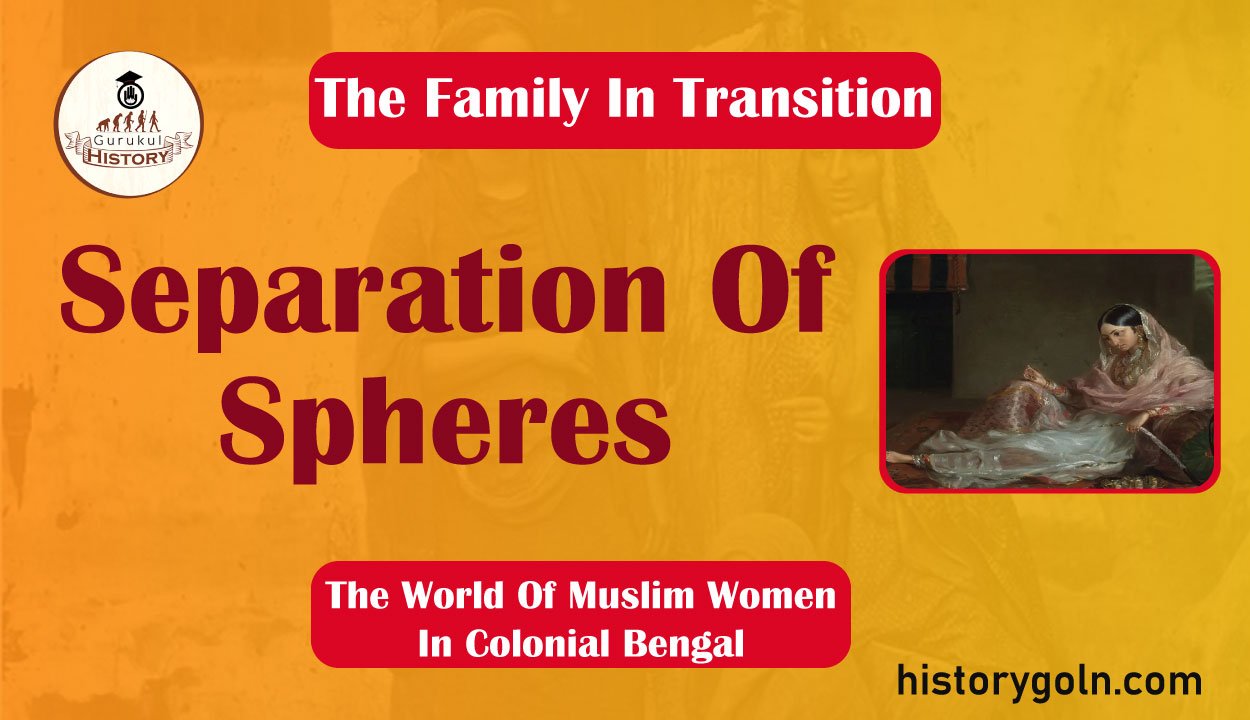Today our topic of discussion is Separation Of Spheres .
Separation Of Spheres

In Charles Dickens’ Great Expectations, Mr Wemmick physically ritualized the separation of spheres every evening on returning home from his work- place, by lifting up the drawbridge that separated his abode from the out- side world.
Dickens might have been indulging in a little satire, but Ruskin and Tennyson were in earnest when they were projecting the idea of sepa- ration of spheres and an innate, feminine nature of women, etc. in their works. Both writers, one as an essayist, the other as a poet, buttressed the concepts of separation of spheres and the ‘nature of women”.
Corresponding to this was the dichotomous Bengali notion of ghar and bahir which gained much currency in the late nineteenth century. To an educated Bengali of the time, the Grihalakshmi was guardian of the ghan and she along with the Manos Sundari/Priya embodied the ideal of femini- nity innate in nature. These concepts were also crafted on to the literary works in Bengali writers.
One of Tagore’s famous novels was titled Ghare Baire (1916) translated into English as ‘The Home and the World”. Earlier in his essay “Prachya O Pratichya” (1891). he had set clear boundaries. between the world of women and men: Woman is the centripetal [sic] force in society.

This force is not being able to combat centrifugal ones in that it is not exerting enough of a pull inward…. Consequently, woman’s empire is shrinking, Commenting on the sharpness of the new division, Borthwick writes:
Employment under British rule accentuated a sharp division between work and home… a division less marked in Hindu society. The leisurely and cultured atmosphere of Mughal administration was more harmonious than was the separation of home and work in Vic- torian England, where the two were so distinct that it was to provide a counter balance between the tensions associated with work.
True, upper-class women had always lived in the Antahpur in Bengal. But with the rise of the middle class the spatial demarcation came to be defined in a new way. As the andar-bahir demarcation became more distinct and assumed more significance there was a simultaneous transcendence of barriers as ‘women’ stepped over from the home into the world.
This is exactly what Tagore’s heroine Bimala in Ghare Baire did do, with the help of her husband, of course. Tagore articulated the ‘Separation of Spheres in his essays also: he used the analogies borrowed from Newtonian Science, perhaps in keeping with the fashion of the day: Woman was the centripetal force in society; centrifugal forces from outside were draining the strength of the interior.
Tagore views on women, womanhood, women’s role, gender relations were always complex, many-faceted and evolving. The Tagore who could hail woman as the ‘Grihalakshmi/Kalyani’ could also make his heroine Mrinal in Strir Patro renounce home and hearth. In many poems written toward the end of his life, he set clear limits to the hegemony of domestic ideology.
The theory of separation of spheres exerted a strong influence on the Muslim mind also. In 1926, Kasema Khatun in her second installment of ‘Narir Kotha’ dwelt on the topic at some length.
She started with a quota- tion from the Persian sage Sadi who had stated that man and woman were two limbs from the same body. The parity, health and harmony of both were essential for happy family life. Following this Kasema in the third instalment of her essay on women, wrote: The human world of action is divided into two spheres the ext- ernal and the internal.

In the main, man rules in the outside world. and women in the internal one. Kasema also lamented the ignorance of uneducated wives which hindered the husband’s career.In fact, she was building a case for female education on the basis of a woman’s responsibility as a wife and partner. One is reminded of Sarah Stickney Ellis.
See more:
